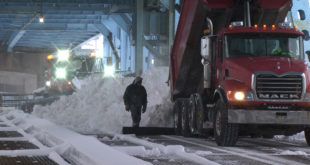The Michigan Department of Natural Resources is continuing their effort to inventory and classify ORV trails throughout the state. Mapping the state forest roads is meant to encourage more people to enjoy Michigan’s public lands through enhanced off-road vehicle opportunities.

The northern Lower Peninsula inventory and classification are complete, currently with roughly 6,300 miles of roads open to ORVs. Inventory and classification for the southern Lower Peninsula and Upper Peninsula are under way right now, and public input is still being accepted.
Bill O’Neill, DNR natural resources deputy, said that feedback received this spring and summer helped the department revise draft recommendations.
“That public input has been an important part of the process as we work to finalize the recommendations for the U.P. and southern Lower Peninsula,” O’Neill said. “We want to hear from users about proposed roads’ impact on local communities.”
Revised recommendations will be discussed at the Oct. 11 and Nov. 8 Natural Resources Commission meetings, with a final decision at the Dec. 13 meeting. Approved recommendations will go into effect January 2019.
The DNR will accept public input throughout the process; in-person comments will be accepted at all three NRC meetings; and mail, email and online feedback can be shared until Nov. 15.
- Comment on Upper Peninsula recommendations by email to DNR-RoadInventoryProject@michigan.gov or mail to DNR Roads Inventory Project, 1990 U.S. 41 South, Marquette, MI 49855.
- Comment on southern Lower Peninsula recommendations by email to DNR-SouthernMIRoadInventory@michigan.gov or mail to DNR Roads Inventory Project, 4166 Legacy Parkway, Lansing, MI 48911.
- View maps and comment online at michigan.gov/forestroads. Select either the U.P. or the southern Lower Peninsula interactive map and follow website instructions to submit comments.
Next year, all state forest roads will be open to ORV use unless designated closed by the DNR for reasons of ensuring user safety, preventing user conflicts or protecting environmentally sensitive areas.
 Keweenaw Report Your Source for Local News and Sports
Keweenaw Report Your Source for Local News and Sports





